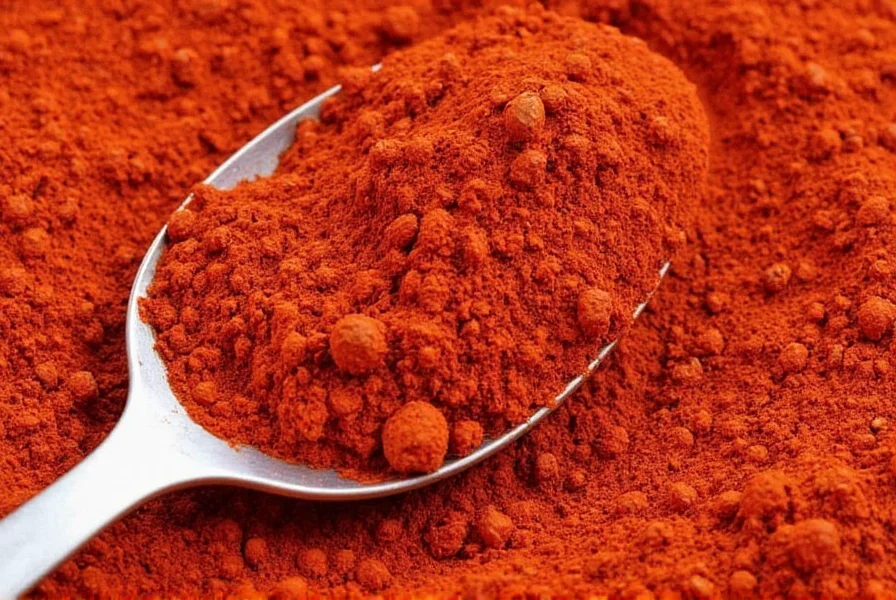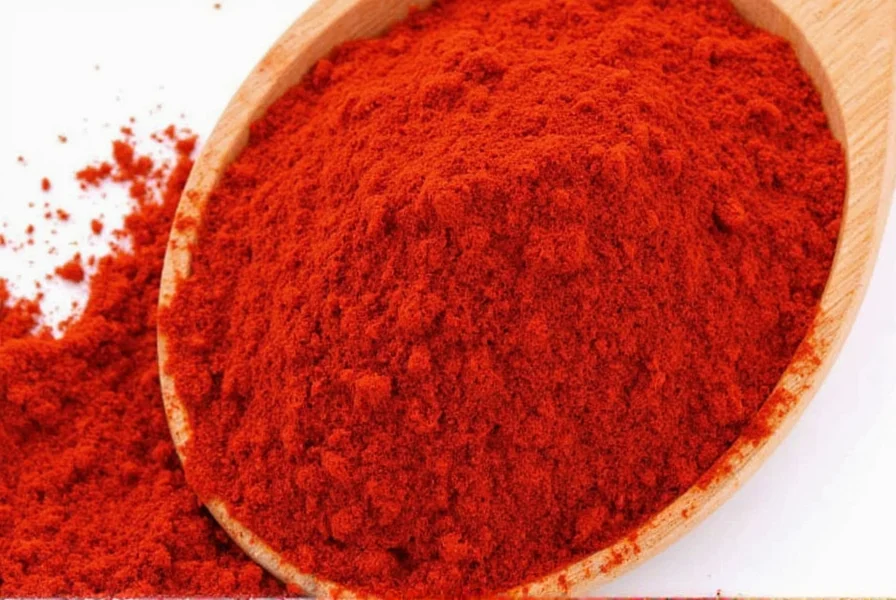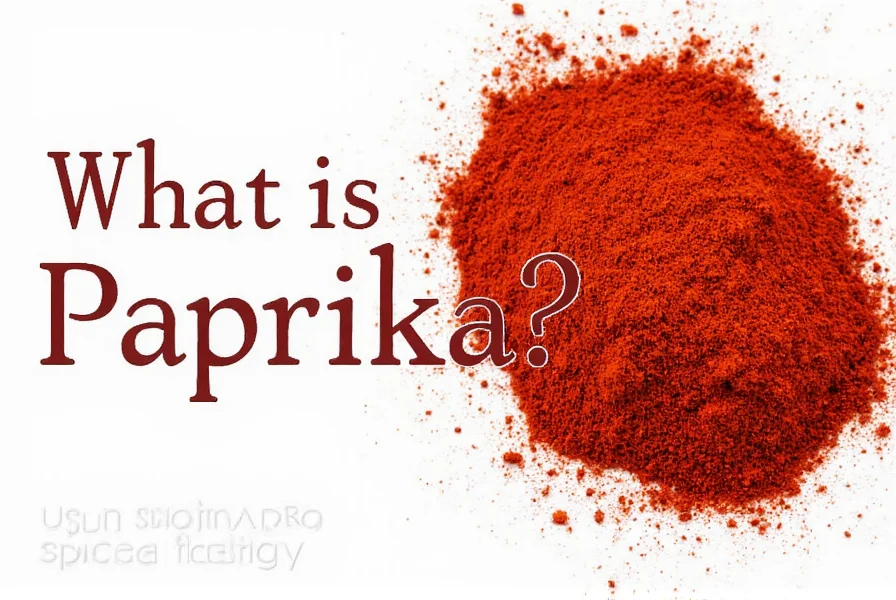Paprika is a vibrant red spice made from ground dried peppers, primarily from the Capsicum annuum species. Originating in Central America but perfected in Hungary, this versatile spice ranges from sweet and mild to hot and smoky depending on the pepper varieties used. Unlike chili powder which often contains additional spices, pure paprika consists solely of dried and ground peppers, offering a distinctive color and flavor profile that enhances dishes without overwhelming heat.
When exploring what is paprika, you're discovering one of the world's most colorful and versatile spices. This ground pepper seasoning has become a kitchen staple worldwide, but its journey from Mesoamerican cultivation to European kitchens is fascinating. Understanding what paprika is made from reveals why it's so unique among spices and how it differs from similar seasonings.

Origin and History of Paprika
Paprika's story begins with Christopher Columbus, who brought chili peppers from the Americas to Europe in the late 15th century. However, it was in Hungary during the 16th century that paprika truly found its home. Hungarian monks began cultivating specific pepper varieties that would eventually become the foundation of authentic Hungarian paprika.
By the 19th century, Hungary had established itself as the paprika capital of the world, with the town of Szeged becoming particularly famous for its high-quality production. Today, both Hungary and Spain are renowned for their distinctive paprika varieties, though many other countries now produce their own versions. This historical context helps explain the regional differences you'll encounter when exploring Hungarian vs Spanish paprika.
How Paprika Is Made: From Peppers to Powder
The process of creating paprika begins with harvesting ripe peppers, which are then carefully dried. Traditional methods involve stringing peppers together and hanging them in well-ventilated areas, though modern production often uses specialized drying equipment.
Once fully dried, the peppers are sorted, destemmed, and ground into a fine powder. The specific grinding technique and equipment used can significantly impact the final product's texture and quality. High-quality paprika maintains its vibrant red color through careful processing that preserves the natural pigments. Understanding what paprika is made from helps explain why premium varieties command higher prices.

Different Types of Paprika Explained
Not all paprika is created equal. The variety you choose dramatically affects your dish's flavor profile. Understanding the difference between sweet and hot paprika is essential for proper culinary application:
| Type of Paprika | Flavor Profile | Common Uses |
|---|---|---|
| Sweet Hungarian Paprika | Mild, sweet, earthy | Goulash, chicken paprikash, soups |
| Hot Hungarian Paprika | Spicy with moderate heat | Meat dishes, stews requiring heat |
| Smoked Spanish Paprika (Pimentón) | Deep smoky flavor, varying heat levels | Paella, chorizo, roasted vegetables |
| Sweet Spanish Paprika | Mild, slightly sweet | Rice dishes, sauces, marinades |
When considering Hungarian vs Spanish paprika, the key distinction lies in production methods. Hungarian paprika typically offers a brighter red color and more straightforward pepper flavor, while Spanish paprika (especially smoked varieties) undergoes a smoking process that imparts a distinctive flavor. This difference explains why recipes often specify which type to use.
Culinary Applications: How to Use Paprika in Cooking
Knowing how to use paprika in cooking properly can transform your dishes. This versatile spice works well in:
- Meat rubs: Combine with garlic powder, salt, and black pepper for steak or chicken
- Stews and soups: Adds depth and color to goulash, chili, and vegetable soups
- Deviled eggs: A classic application that provides both color and flavor
- Rice and grain dishes: Especially effective with Spanish paprika in paella
- Marinades: Blends well with olive oil, garlic, and herbs
Pro tip: Add paprika toward the end of cooking for maximum flavor impact, as prolonged heat can diminish its aromatic compounds. For the best results, bloom paprika in a small amount of oil before adding other ingredients. This technique enhances both the flavor and vibrant color that makes paprika so valuable in culinary applications.
Nutritional Benefits and Health Properties
Beyond its culinary appeal, paprika offers several paprika nutritional benefits. It's rich in:
- Vitamin A: One teaspoon provides about 40% of your daily requirement
- Vitamin E: A powerful antioxidant that supports skin health
- Carotenoids: Including capsanthin, which gives paprika its vibrant red color
- Iron: Particularly important for plant-based diets
Research suggests that the capsaicinoids in paprika may support metabolism and provide anti-inflammatory benefits. While milder than many chili peppers, paprika still contains compounds that can boost circulation and potentially support heart health. These health properties make paprika more than just a coloring agent—it's a functional ingredient with real nutritional value.
Storage Tips and Substitutes
To maintain freshness, store paprika in an airtight container away from light and heat. Properly stored, it retains optimal flavor for 6-12 months. You'll know it's past its prime when the vibrant red color fades to orange or brown.
If you're wondering is paprika the same as chili powder, the answer is no. While both come from ground peppers, chili powder typically contains additional spices like cumin and garlic powder. For substitutions:
- Sweet paprika substitute: A mix of cayenne pepper and sweet red bell pepper powder
- Smoked paprika substitute: Regular paprika with a drop of liquid smoke (use sparingly)
- Hot paprika substitute: Cayenne pepper diluted with sweet paprika
Frequently Asked Questions About Paprika
What is paprika made from?
Paprika is made from ground dried peppers, primarily from the Capsicum annuum species. Different varieties use specific pepper types ranging from sweet bell peppers to hotter chili varieties, depending on the desired flavor profile. The specific peppers used determine whether the paprika will be sweet, hot, or smoked in flavor.
Is paprika spicy?
Paprika ranges from sweet and mild to hot, depending on the variety. Sweet Hungarian paprika has minimal heat, while hot Hungarian varieties provide noticeable spiciness. Smoked Spanish paprika (pimentón) comes in sweet, bittersweet, and hot varieties. The heat level is measured on the Scoville scale, with sweet paprika registering near zero and hot varieties reaching several thousand units.
What's the difference between paprika and chili powder?
Paprika consists solely of ground dried peppers, while chili powder is a blend that typically includes paprika plus other spices like cumin, garlic powder, and oregano. Pure paprika offers a cleaner pepper flavor without additional seasonings, making it ideal when you want the distinct pepper flavor without competing spices. This distinction is crucial when following authentic regional recipes.
Can I substitute smoked paprika for regular paprika?
Yes, but with caution. Smoked paprika has a distinct smoky flavor that regular paprika lacks. For recipes where smoke flavor isn't desired, use regular paprika. If substituting smoked for regular, use about half the amount to avoid overpowering the dish with smoke flavor. The reverse substitution (regular for smoked) works better in most cases, though you'll miss the characteristic smokiness that defines certain dishes like traditional Spanish paella.
Why is my paprika losing its color?
Paprika's vibrant red color fades when exposed to light, heat, or air. Store paprika in an airtight container in a cool, dark place. Properly stored, it maintains color for 6-12 months. Faded paprika (orange or brown) has lost much of its flavor and should be replaced. The color loss indicates degradation of the carotenoid pigments that give paprika both its visual appeal and many of its health benefits.











 浙公网安备
33010002000092号
浙公网安备
33010002000092号 浙B2-20120091-4
浙B2-20120091-4